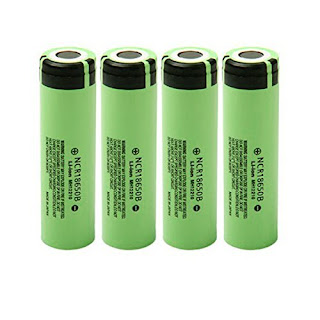Lithium-ion Battery

Lithium-ion batteries are common rechargeable batteries
for portable electronics, with a high energy density,
tiny memory effect and low self-discharge. Lithium-ion batteries
are also growing in popularity for military, electric vehicle and aerospace applications.
Invention
Lithium
batteries were first proposed by British chemist M Stanley Whittingham, now
at Binghamton University, while working for Exxon in the 1970s. He
proposed a lithium-titanium disulfide battery, which was discontinued because
of the high cost of titanium disulfide also when exposed to air, titanium
disulfide reacts to form hydrogen sulfide compounds, which have an unpleasant odor
and are toxic to most animals. As well as Batteries with metallic lithium electrodes presented
safety issues, as lithium is a highly reactive element; it auto
ignites exposed to normal atmospheric conditions because of spontaneous
reactions with water and oxygen. As a result, research moved to develop
batteries in which, instead of metallic lithium, only lithium compounds are
present, being capable of accepting and releasing lithium ions. Which developed
in the form of Lithium-ion batteries,
commonly used today.
Construction
The three
primary functional components of a lithium-ion battery are the positive and
negative electrodes and electrolyte. Generally, the negative electrode of a
conventional lithium-ion cell is made from carbon. The positive electrode
is a metal oxide,
and the electrolyte is a lithium salt in
an organic solvent. The electro-chemical roles of the electrodes
reverse between anode and cathode, depending on the direction of current flow
through the cell.
Depending
on materials choices of electrodes and electrolytes, the voltage, energy density,
life, and safety of a lithium-ion battery can change dramatically. Recently, novel
architectures using nanotechnology have been employed to improve
performance.
Pure lithium is highly reactive. It reacts
vigorously with water to form lithium hydroxide and hydrogen gas.
Thus, a non-aqueous electrolyte is typically used, and a sealed container
rigidly excludes moisture from the battery pack.
Advantage
·
High energy
density - potential for yet higher capacities.
·
Does not need
prolonged priming when new. One regular charge is all that's needed.
·
Relatively low
self-discharge - self-discharge is less than half that of nickel-based
batteries.
·
Low Maintenance
- no periodic discharge is needed; there is no memory.
·
Specialty cells
can provide very high current to applications such as power tools.
Disadvantage
- Requires
protection circuit to maintain voltage and current within safe limits.
- Subject to
aging, even if not in use - storage in a cool place at 40% charge reduces
the aging effect.
- Transportation
restrictions - shipment of larger quantities may be subject to regulatory
control. This restriction does not apply to personal carry-on batteries.
- Expensive
to manufacture - about 40 percent higher in cost than nickel-cadmium.
- Not fully
mature - metals and chemicals are changing on a continuing basis.




Good
ReplyDelete